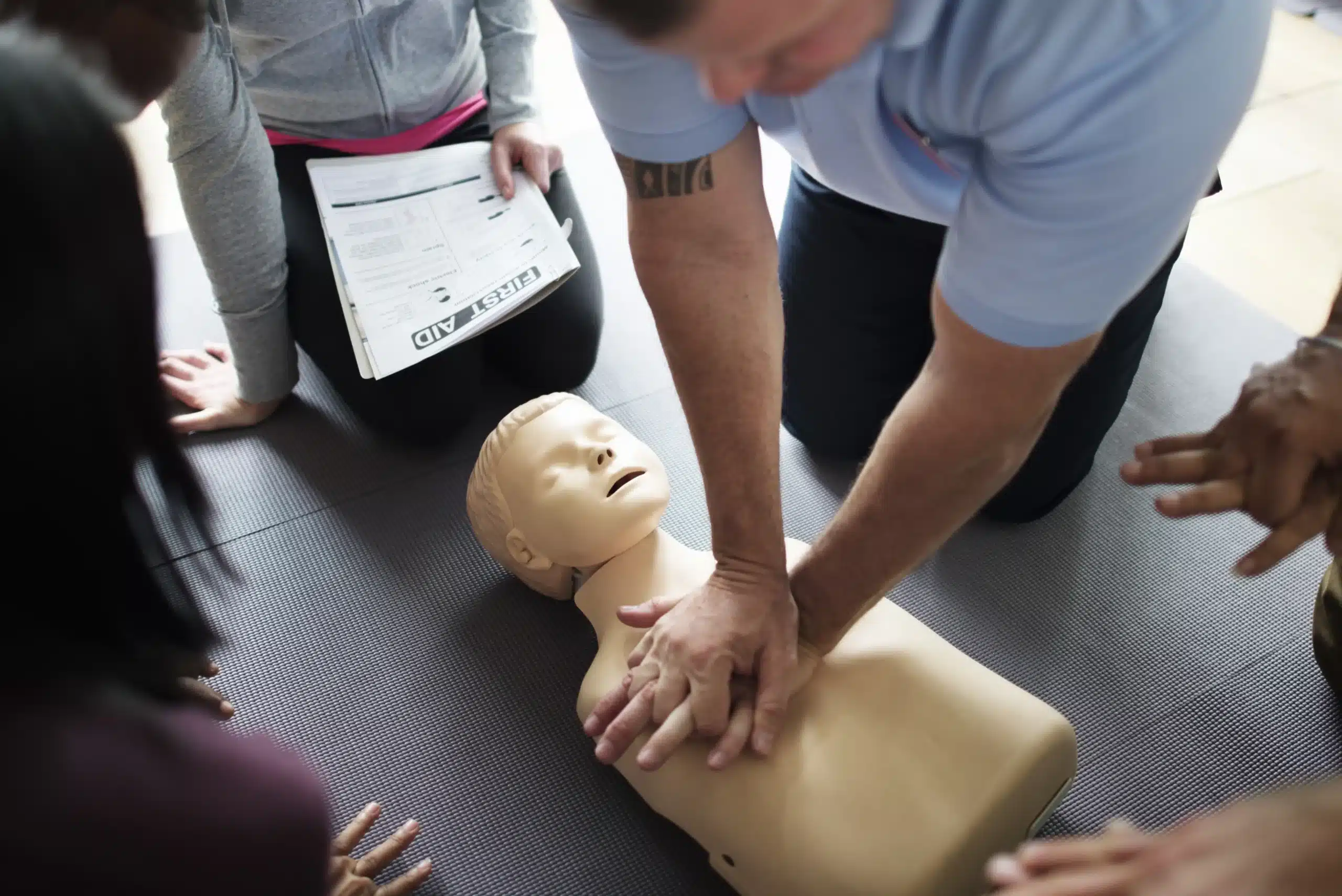Emergencies happen. When they do, having someone trained in CPR and first-aid can make all the difference. Not only do these skills save lives, but they also foster a safer work environment. In this blog post, we’ll explore the importance of workplace CPR and first-aid training, covering why it’s crucial and how it benefits both employees and employers.
The Lifesaving Impact of CPR and First-Aid
Cardiopulmonary resuscitation (CPR) and first-aid are essential skills. They equip individuals with the ability to respond effectively to medical emergencies. Whether it’s a sudden cardiac arrest or a minor injury, knowing what to do can significantly improve outcomes. Studies show that immediate CPR can double or triple survival rates after cardiac arrest. These statistics highlight the importance of having trained individuals in every workplace.
Why Every Workplace Needs CPR Training
Workplace emergencies are unpredictable. Employees spend much of their time at work, which means accidents are likely to occur there. Training employees in CPR ensures that help is available right when it’s needed. Furthermore, workplaces that offer CPR training foster a culture of safety and preparedness, benefiting everyone involved.
The Role of First-Aid in the Workplace
First-aid involves providing initial care during a medical emergency. It covers a wide range of situations, from minor cuts to severe injuries. With proper training, employees can stabilize a situation until professional help arrives. This immediate response not only aids in recovery but can also prevent further harm. Workplace first-aid training empowers employees with the confidence and skills to act swiftly and appropriately.
Boosting Employee Confidence Through Training
Confidence is key in emergency situations. Employees trained in CPR and first-aid feel more prepared to handle crises. This assurance stems from hands-on practice and understanding protocols. When employees know how to respond, they can act decisively, which can be crucial in saving lives.
Enhancing Workplace Safety Culture
Safety should be a priority in every organization. Providing CPR and first-aid training demonstrates an employer’s commitment to safety. This training not only equips employees with vital skills but also emphasizes the value placed on their well-being. A strong safety culture can reduce workplace accidents and improve overall morale.
Legal Obligations and Compliance
In some industries, providing CPR and first-aid training is not just a good idea—it’s a legal requirement. Regulations may mandate certain levels of preparedness, especially in high-risk environments. Companies that fail to comply may face legal repercussions. By offering training, businesses can ensure compliance and protect themselves legally.
Cost-Effectiveness of Training Programs
Some may view CPR and first-aid training as an unnecessary expense. However, the reality is that these programs are a cost-effective investment. The cost of training is minimal compared to potential costs associated with workplace injuries or fatalities. Additionally, trained employees can prevent minor incidents from becoming major liabilities.
Increased Employee Retention
Employees appreciate when their employers invest in their safety and well-being. Offering training programs can enhance job satisfaction and loyalty. Employees who feel cared for and valued are more likely to stay with their company long-term, reducing turnover rates.
Reducing Workplace Accidents and Injuries
Accidents and injuries disrupt productivity and can lead to significant costs. Proper training in CPR and first-aid can reduce the frequency and severity of these incidents. Trained employees are equipped to respond quickly, potentially preventing injuries from escalating and reducing downtime.
Building Team Spirit and Cohesion
Training sessions provide an excellent opportunity for team building. Employees participating in CPR and first-aid training work together, fostering collaboration and camaraderie. This strengthened team spirit can translate into better cooperation and communication in daily work activities.
The Value of Regular Training Updates
Training is not a one-time event. CPR and first-aid techniques evolve, and regular updates are necessary to maintain proficiency. Employees benefit from refresher courses, ensuring they stay informed of the latest practices. Regular training updates also reinforce a commitment to safety.
Encouraging a Proactive Approach to Health
When employees are trained in CPR and first-aid, they become more health-conscious. This proactive approach can lead to healthier lifestyle choices and a greater awareness of personal and workplace safety. Employers benefit from a healthier workforce, which can lead to increased productivity and reduced absenteeism.
Conclusion
The importance of workplace CPR and first-aid training cannot be overstated. These skills not only save lives but also promote a culture of safety and preparedness. By investing in training, businesses demonstrate their commitment to employee well-being, boost morale, and ensure compliance with legal requirements. Ultimately, a safer workplace is a more productive and harmonious environment. For those interested in enhancing their safety protocols, consider implementing regular training sessions and refreshing your team’s skills. This proactive step will undoubtedly make a significant impact.
Contact us today to schedule a session for your workplace today.






